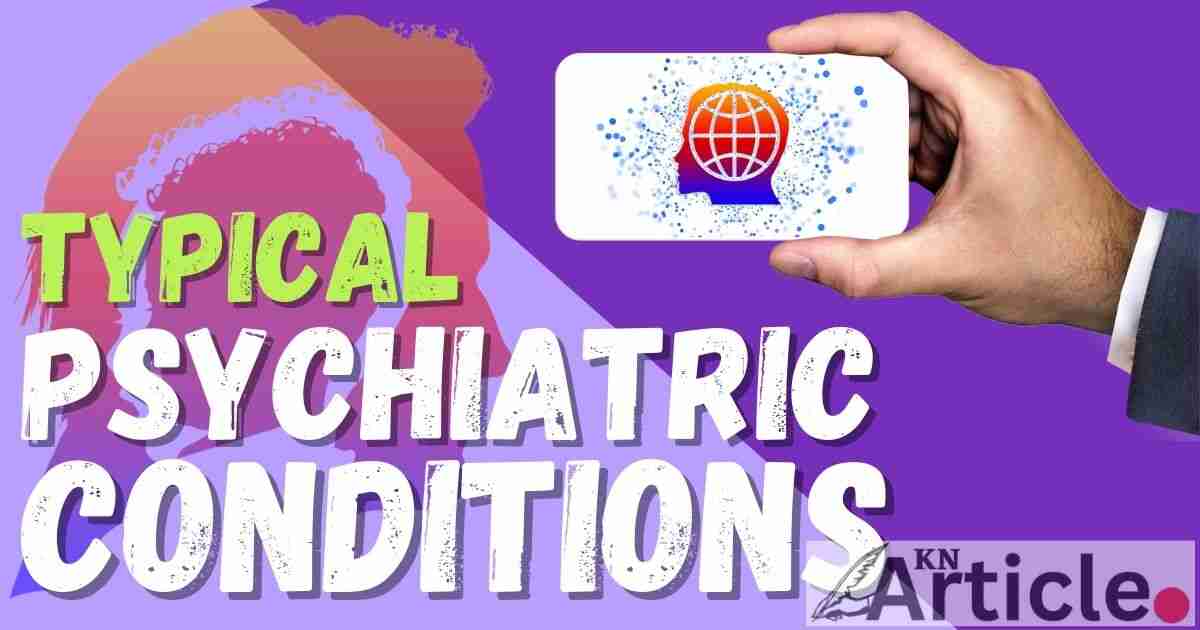 |
| Typical Psychiatric Conditions |
Within the first 10 years of obtaining their original diagnosis, 47% of people with mental health disorders acquire a new diagnosis. After a patient receives a diagnosis of the initial disease, psychiatrists frequently remark to one another - not because the diagnosis is incorrect, but rather because psychiatrists are aware that psychiatric diagnoses have the propensity to evolve with time. In actuality, after 10 years of obtaining their first diagnosis, 47% of mental patients receive a new diagnosis...
This is the outcome of recent research that tracked the diagnostic progression of more than 180,000 Danish individuals with mental disorders. Anders Jorgensen, an associate professor of clinical research at the department of clinical medicine, is one of the researchers involved in the study. He is not shocked by the study's findings.
Mental illnesses change throughout time. change during the course of a lifetime. As a result, Anders Jorgensen explains, "I am not surprised by the rather significant diagnostic development in these cases.
The analysis identifies which developments for the 20 most prevalent mental disorders are likely and which are doubtful. the ones that are most ambiguous, or more prone to alter, such as depression, addiction, and acute psychosis diagnosis...
The diagnosis of functional disabilities, which are long-term physical impairments without a physical cause, eating disorders, and sexual disorders including decreased sexual desire or erectile dysfunction without a physical cause is the most definite, or the least likely to change.
Since the research allows clinicians to check the 10-year diagnostic progression of other patients, it is helpful from the moment a patient receives a diagnosis of their first problem.
"Doctors need these numbers in order to choose the best course of therapy and be able to inform patients of what to anticipate. Finally, we think it will contribute to bettering care and ensuring evidence-based follow-up. According to Anders Jorgensen, the better the therapy is going to be, the more you understand the expected path of the condition...
Patients receiving care in the psychiatric healthcare system are the only subjects of the study. This implies that the research does not include patients who visit their primary care physician and are advised to see a psychologist.
According to Anders Jorgensen, "We only look at those who have been diagnosed in mental institutions and who often have more severe episodes of disease than those who schedule an appointment with their GP."
The diagnosis of depression is one of the most ambiguous.
Patients with a single episode of depression have the highest risk of developing a new disorder within 10 years among the three most frequent diagnoses examined in the study...
Patients receiving care in the psychiatric healthcare system are the only subjects of the study. This implies that the research does not include patients who visit their primary care physician and are advised to see a psychologist.
According to Anders Jorgensen, "We only look at those who have been diagnosed in mental institutions and who often have more severe episodes of disease than those who schedule an appointment with their GP."
The diagnosis of depression is one of the most ambiguous.
Patients with a single episode of depression have the highest probability of developing a new condition within 10 years among the three most frequent disorders examined in the study.
Associate Professor Terese Sara Hj Jorgensen from the Section of Social Medicine at the Department of Public Health explains that people with this diagnosis have a 60% likelihood of receiving a new diagnosis within 10 years...
However, the figures might be misleading. Because most people (20%) who are given a diagnosis of a single episode of depression go on to be given a periodic depression diagnosis, which is another term for persistent depression.
According to Anders Jorgensen, "It is not surprising that a single bout of despair might turn into persistent depression."
The diagnoses most likely to accompany a depression diagnosis are personality disorder and stress reaction disorders, followed by recurrent depression. When a significant event, like a divorce or death, results in the patient developing a mental disorder that resembles stress or depression, that condition is known as a stress-reaction disorder.
Anders Jorgensen hopes the new information will contribute to bettering the care given to those who experience depression...
"Unlike patients who have their first psychosis, we do not yet have a standardized therapy for patients who have their first depressive episode. Our data can help the creation of a successful therapy, therefore we might investigate developing such a possibility, says Anders Jorgensen.
What was the scope of the study?
The researchers identified psychiatric patients who were 18 years of age or older and had been diagnosed with one of the 20 most prevalent mental diseases using Danish registry data. They now had a group of 184,949 people.
The researchers examined the evolution of the patient's diagnoses from the first prognosis. They examined the development using a technique known as sequence analysis.
The normal progression for the three most prevalent diagnoses examined in the study...
Depression:-
Within 10 years of receiving a diagnosis for a single depressed episode, 60% of patients receive a new diagnosis. Periodic depression strikes 20% of people, stress disorders strike 10%, and personality disorders strike 6%.
In the case of addiction, 52% have a new condition within 10 years. Five percent have personality disorders, eight percent have stress disorders, and five percent have schizophrenia. All addiction diagnoses, including those for alcohol, opioids, cannabis, etc., fall under this group. There is greater uncertainty about certain addictions than others.
Within ten years, 36 percent of those with stress reaction disorder will receive a new condition diagnosis. A personality disorder, a depressive episode, and recurring depression all occur in 8%, 7%, and 6% of people, respectively.
Abstract Consultation:-
Danish countrywide cohort research employing sequence analysis to map diagnostic trajectories from the initial hospital diagnosis of mental disease.


Impressive